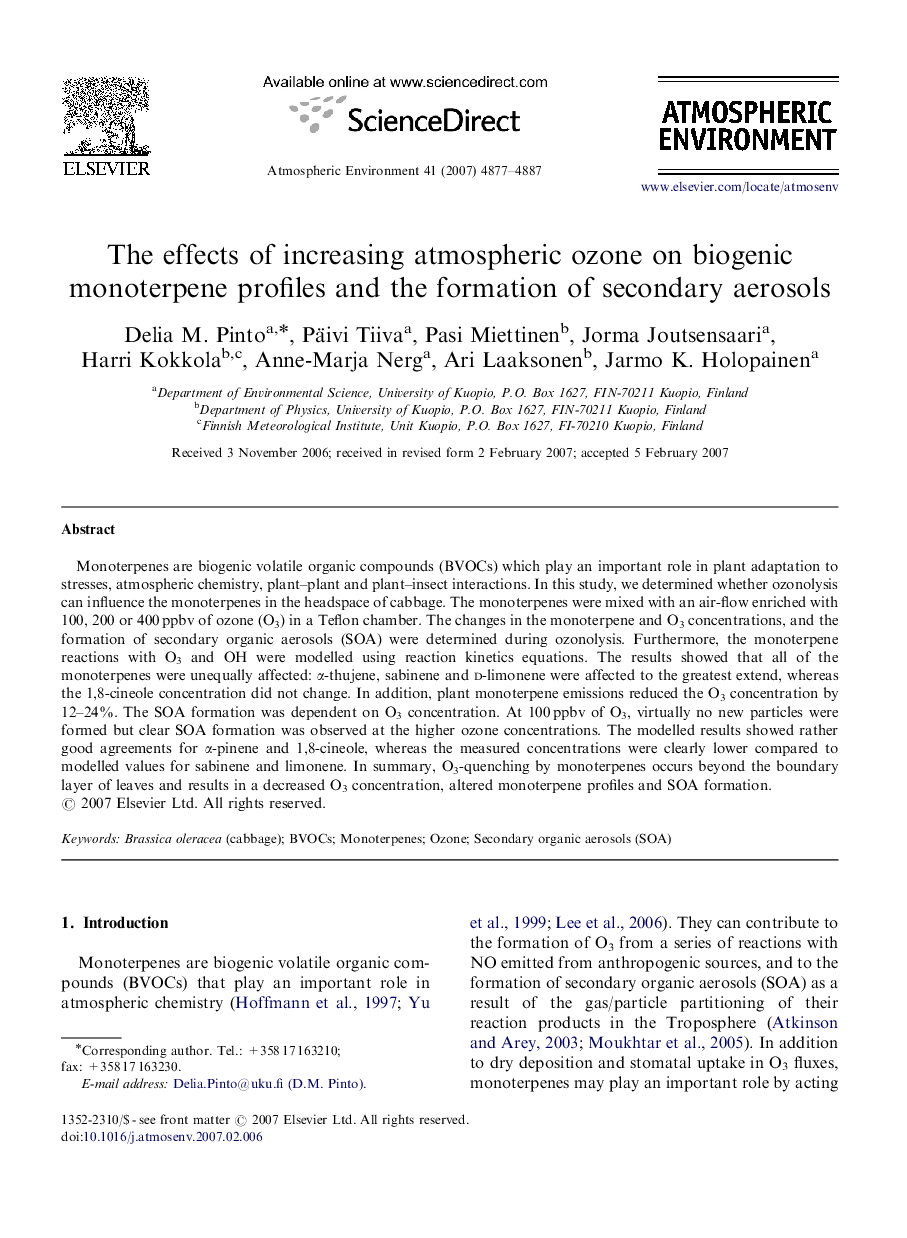| Article ID | Journal | Published Year | Pages | File Type |
|---|---|---|---|---|
| 4443576 | Atmospheric Environment | 2007 | 11 Pages |
Monoterpenes are biogenic volatile organic compounds (BVOCs) which play an important role in plant adaptation to stresses, atmospheric chemistry, plant–plant and plant–insect interactions. In this study, we determined whether ozonolysis can influence the monoterpenes in the headspace of cabbage. The monoterpenes were mixed with an air-flow enriched with 100, 200 or 400 ppbv of ozone (O3) in a Teflon chamber. The changes in the monoterpene and O3 concentrations, and the formation of secondary organic aerosols (SOA) were determined during ozonolysis. Furthermore, the monoterpene reactions with O3 and OH were modelled using reaction kinetics equations. The results showed that all of the monoterpenes were unequally affected: α-thujene, sabinene and d-limonene were affected to the greatest extend, whereas the 1,8-cineole concentration did not change. In addition, plant monoterpene emissions reduced the O3 concentration by 12–24%. The SOA formation was dependent on O3 concentration. At 100 ppbv of O3, virtually no new particles were formed but clear SOA formation was observed at the higher ozone concentrations. The modelled results showed rather good agreements for α-pinene and 1,8-cineole, whereas the measured concentrations were clearly lower compared to modelled values for sabinene and limonene. In summary, O3-quenching by monoterpenes occurs beyond the boundary layer of leaves and results in a decreased O3 concentration, altered monoterpene profiles and SOA formation.
